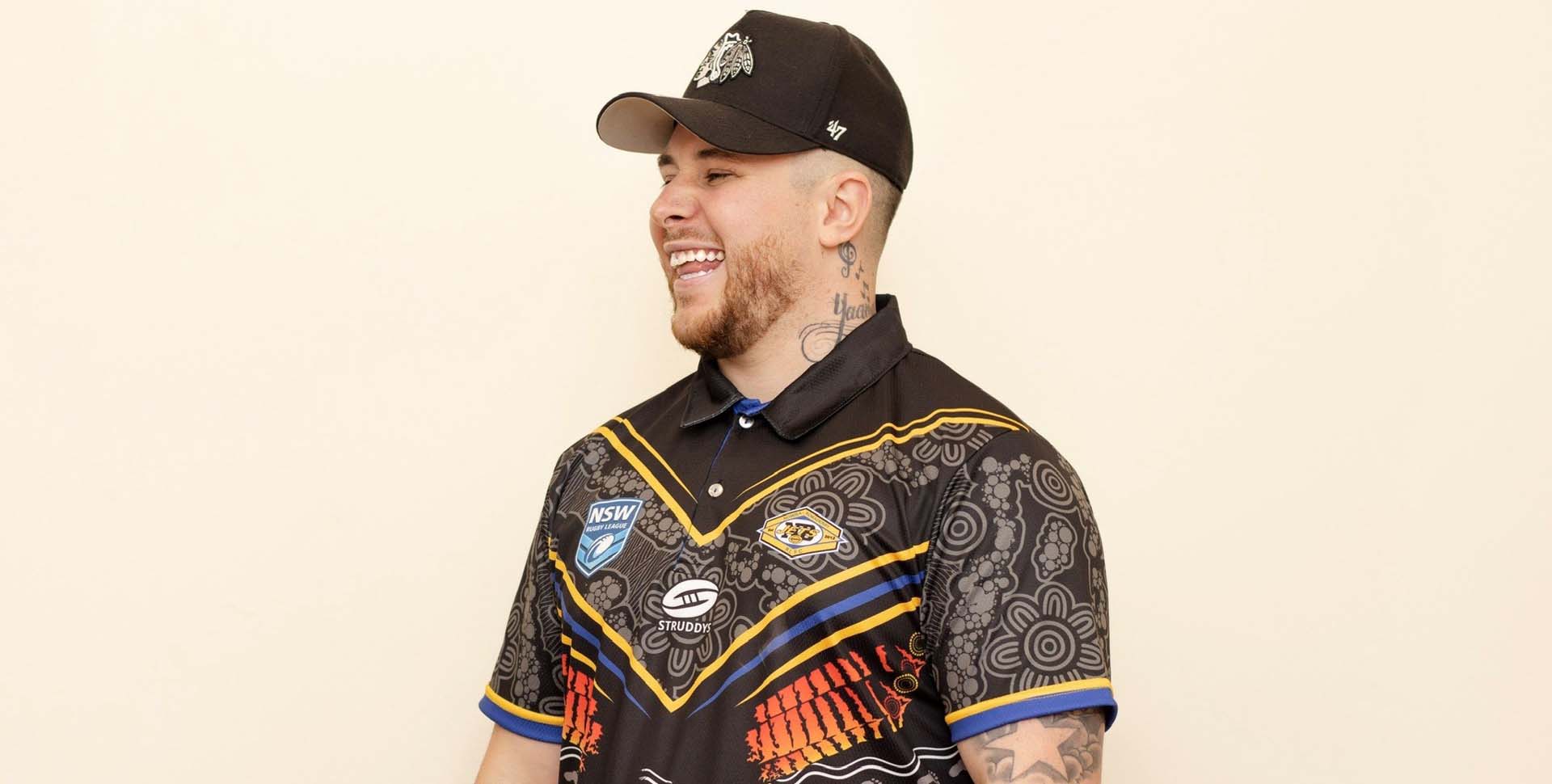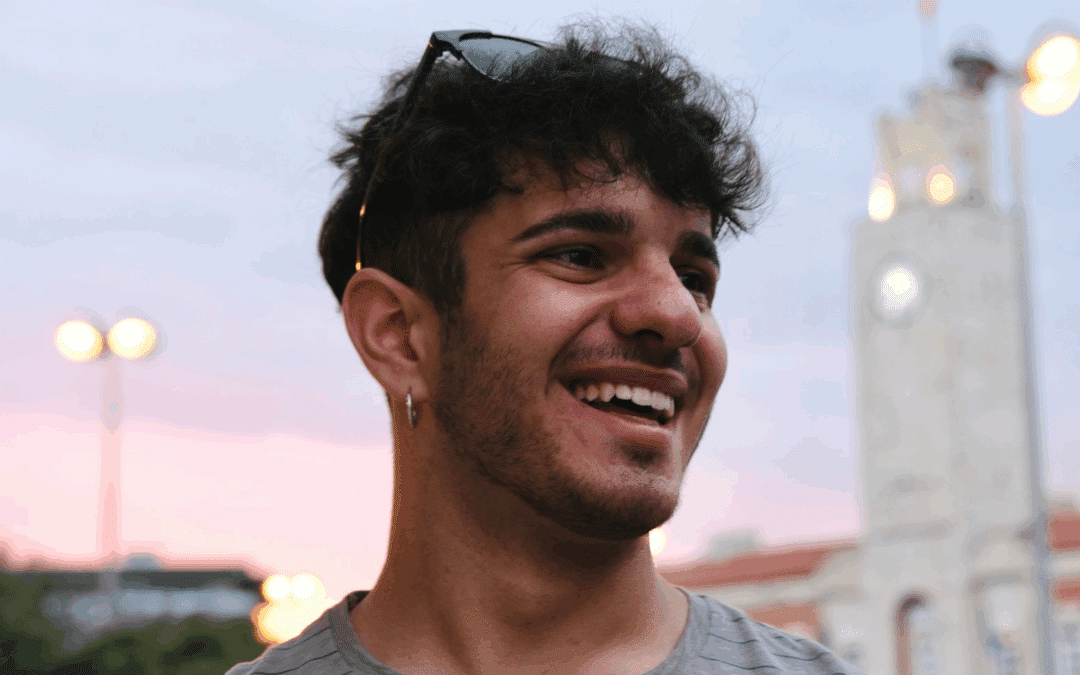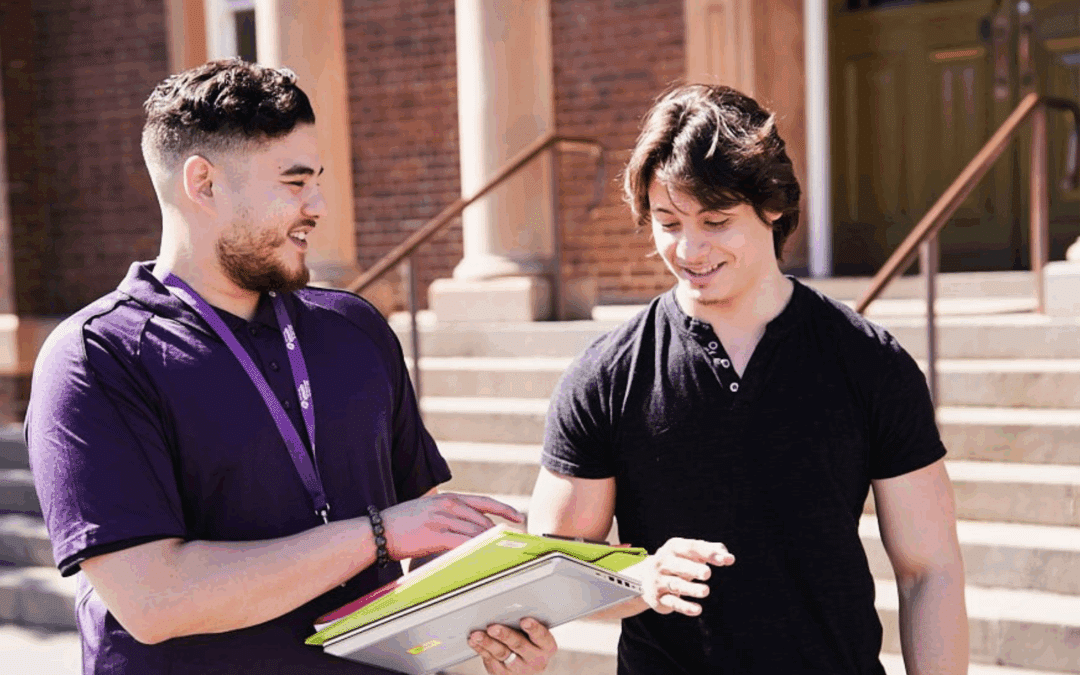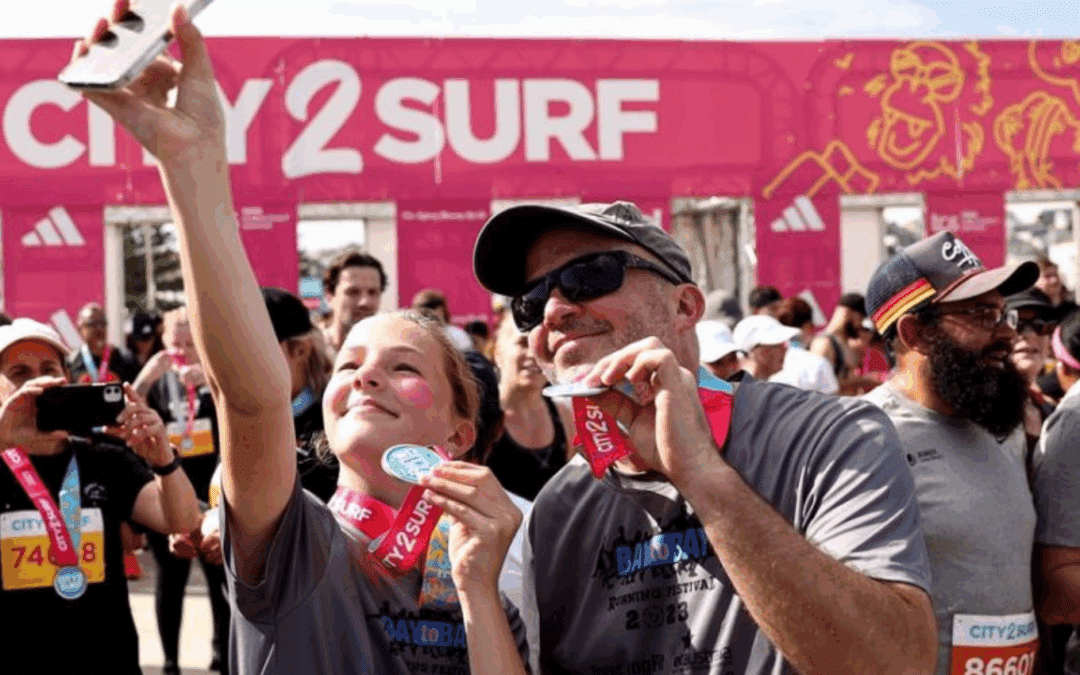Sean Kinchela moved a lot during his childhood. His mother struggled with addiction and home often didn’t feel safe, so he stayed with friends much of the time.
When he was 12, Sean’s mother moved away and he began couch surfing, moving from one friend’s house to the next.
“My friends’ parents would let me stay with them,” Sean explains.
“But I struggled to attend school. I ended up getting in trouble as a teenager and expelled from high school.
“I was just living day to day. At that age, I didn’t have any vision or goals. I didn’t have much guidance.”
A new start
What was meant to be a temporary situation turned into years of homelessness. Finally, at the age of 16, Sean moved in with his nan.
“She knew my situation and had offered me a place to live, but I was moving around all the time,” he recalls.
“I eventually found a good group of friends and wanted to stay in one spot.”
After moving in with his nan, another family member helped him find a way to finish his Higher School Certificate.
“My Aunt Cheryl was living in the Southern Highlands,” Sean reflects. “She wanted to get me back into school.
“I tried to get into schools, and no one would take me. I applied to so many, even outside my area.”
At the time, Sean’s aunt worked for Youth Off The Streets and was based in Canyonleigh, where one of its alternative high schools was located at the time.
“She spoke with the school and they agreed to take me on,” Sean says.
Once Sean began school at Youth Off The Streets, things started looking more positive. “It was a small class – about six people,” he says.
“It was so good. The teachers had a lot more time to invest in the kids. They weren’t fighting for attention and could have their carers with them.”
Sean says his teachers helped guide him through his education, and he felt he could rely on them.
“The teachers would counsel me,” he reflects. “I opened up a lot to a couple of teachers. They were always there for me.”
He was the oldest student and the first in his class to complete his HSC.
“I’m grateful to Youth Off The Streets for all the support I received,” he says. “I honestly wouldn’t be here if it weren’t for you.”
Connection to culture
Sean stayed in the Southern Highlands for a while after graduating. Eventually, he moved to Tamworth in Northern New South Wales to connect with his Gamilaroi and Wiradjuri heritage.
“My nan was part of the Stolen Generations and was moved to the south,” he explains.
Sean felt like the connection to his culture was lost, which contributed to his experience with depression.
“Growing up somewhere I wasn’t from and seeing everyone else around with their families and their cultural practices made me feel that loss of connection.
“I ventured back to where Nan was from to reconnect with my Indigenous side of the family and find out where I came from and who they are.”
At one point, Sean’s nan joined him and was able to meet the family she had been taken from. “I took her around and introduced her to her first cousins,” Sean reflects.
“It was so good and sad simultaneously, because they’re the people she should have grown up around and bonded with.”
Giving back to community
Sean eventually moved back to his hometown on the NSW South Coast to complete a traineeship in Aboriginal health – where his passion for this field was ignited.
“I was looking for work and saw an advertisement at the medical service for a traineeship in managing ear health and helping to prevent otitis media [middle ear infection],” he recalls.
Sean is now in his sixth year as an Eye and Ear Health Coordinator.
“I run an early intervention program in otitis media and oral health,” he explains.
“We go into schools and screen Indigenous kids from preschool to primary school for health issues – to see if they have ear infections or hearing loss.”
Sean explains that teachers sometimes mistake hearing issues in First Nations children for lack of interest in school or behavioural issues. But that often isn’t the case.
“We assess them to ensure that kids can hear and refer them to doctors or specialists if they need medical attention.
“If they have experienced hearing loss, we ensure they get hearing aids to help them learn to the best of their ability.”
Not only has Sean built a rewarding career in healthcare, he’s also a successful artist whose designs were recently used for the Parramatta Eels 2022 Indigenous jersey.
“I’ve been practicing art since before I can remember,” he says. “I didn’t take it too seriously until I realised there were pathways for me to showcase my art.”
The Daily Telegraph: Every NRL Indigenous jersey from 2017 to 2024
For years, Sean applied to competitions for jersey designs.
“I kept applying and kept getting knocked back,” he explains.
“It just seemed like it was never going to happen. I knew I needed to find a way to get through, so I shared my designs with the Parramatta Eels fan pages.”
The fans loved Sean’s art and contacted the club to ask for their support.
“The club eventually reached out to me and asked to use my designs. It was a real breakthrough.”
Graphic design and painting have become like a second full-time job for him.
“When I get home from working with the medical service, I go straight to my laptop or my paints to work until I go to bed.”

Sean also uses his skills and life experience to teach art to children and young people in out-of-home care.
“I recently finished some Indigenous art workshops in Sydney and Newcastle through a non-profit organisation called Key Assets.
“Some of the kids have been in out-of-home care since they were six months old,” he says.
“They wanted to put a shirt design together for the staff and the kids, so we’ve worked with them to stitch it together and put it into a digital design.”
Sean’s experience of overcoming homelessness and barriers to education, as well as the challenges of making it as an artist, have shown him that the key to achieving your goals is to think outside the box and stay persistent.
“Persistence is key. Many people try things and if they get knocked back, they get discouraged. But in all walks of life, being persistent will get you places.”
View more of Sean Kinchela’s work and follow him on social media here.



